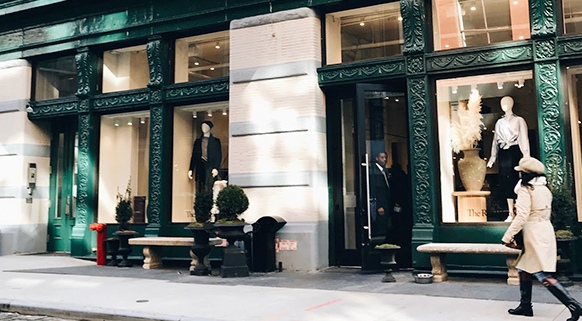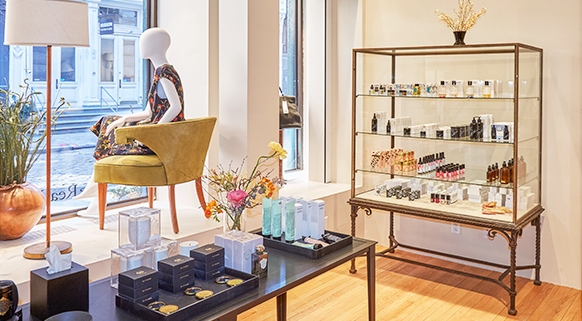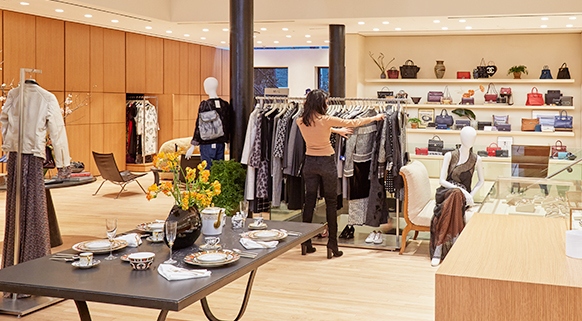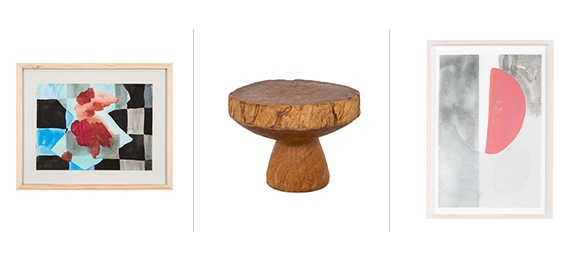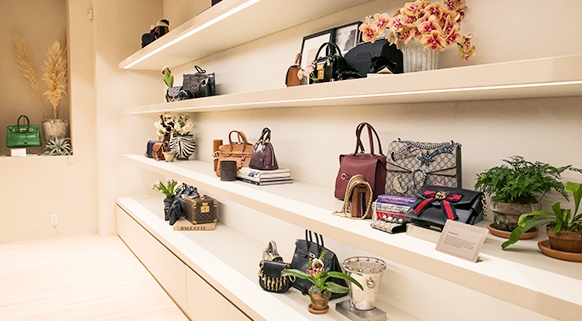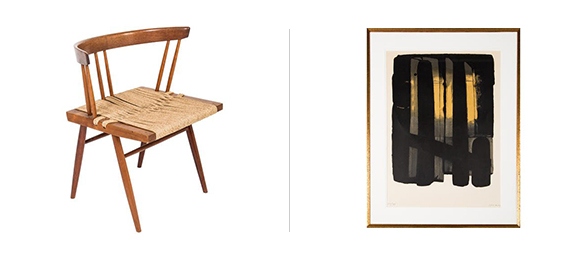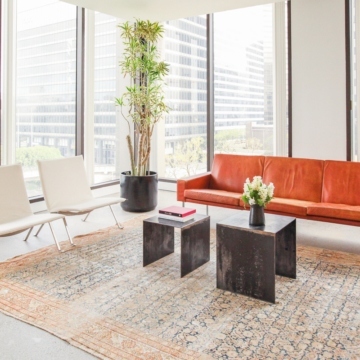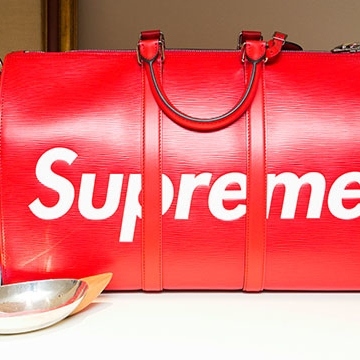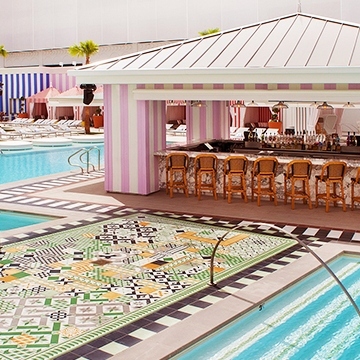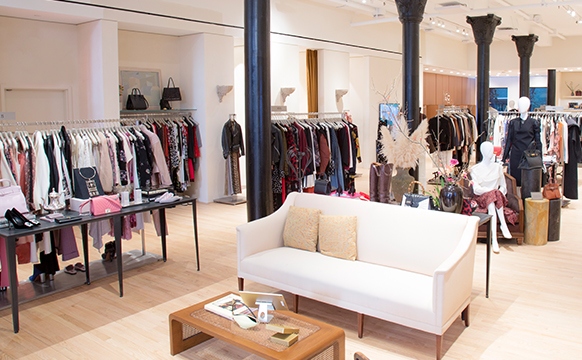
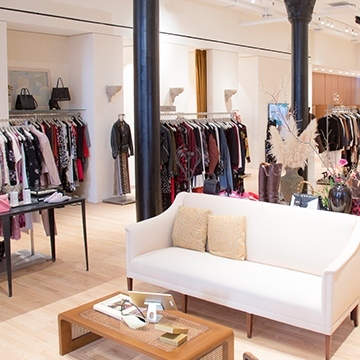
80 Wooster: the Art, Design & History Behind Our Soho Store
Have you strolled through SoHo recently, enjoying the iconic cast-iron architecture and romantic cobblestone streets? If you have, then you’ve likely stumbled across our permanent store, located at 80 Wooster St. Nestled in this little SoHo nook, our store offers two floors of the finest luxury consignment, from Hermès Birkins and Chanel tweed suits to refined Rolexes and Supreme streetwear staples. In essence, we’ve brought the best of our online offerings to New York.
But before we were the new kids on the block, 80 Wooster St. wasn’t just another empty storefront. It was – and is – a building with an illustrious and illicit past. From illegally housing up-and-coming artists to serving as a center for underground films, 80 Wooster St. has seen it all. Read on for a brief behind-the-scenes of the building, plus the art and design that’s culminated in our own one-of-a-kind space.
The History
In 1894, the seven-story warehouse was constructed by real estate developers in the SoHo district. What had previously been farmland and then a mostly residential neighborhood was now a bustling hub of commerce, where shops and factories flourished alongside apartment buildings and boarding houses. With its ornate façade of cast-iron columns, 80 Wooster was hailed as a “massive … example of Beaux-Arts Classicism.”
Fast forward to 1967. At this point, the building had changed hands a number of times, and its commercial facilities were becoming increasingly obsolete. Multiple manufacturers left the area, opting for newer, ground-level buildings in less congested areas. But George Maciunas, a Lithuanian-born artist, didn’t see dilapidation and disrepair where 80 Wooster St. stood. Instead, he saw an opportunity for rebirth.
Maciunas’ family had fled Lithuania when he was a boy, and eventually immigrated to Long Island in 1948. He was interested in art from a young age, and studied architecture and musicology, earning a Bachelor of Architecture from the Carnegie Institute of Technology. But things began to take shape for Maciunas when he enrolled in composition classes at the New School with Richard Maxfield, a former student of John Cage.
Here, artistic exploration and unconventional thinking were celebrated, and Maciunas was inspired to create an art movement that appealed to everyone equally, not just “critics, dilettantes and professionals.” In 1961, he named this movement Fluxus, describing it “as a fusion of Spike Jones, vaudeville, gags, children’s games and Duchamp.” Examples of this irreverent, eccentric style of art included Maciunas and his friends donning dentist outfits and scrubbing the sidewalk using toothbrushes.
Though Maciunas’ concept of anti-elitist art fell largely on deaf ears, he realized that it was vital that artists have a space in which to both live and create. Drawing on his background in architecture, Maciunas envisioned cooperative loft living as a solution to the artist housing and workspace problem. He purchased 80 Wooster, in addition to a number of other underutilized loft buildings in SoHo, and founded FLUXHOUSE, an artist co-op community and the new Fluxus headquarters.
Independent film society NY Cinematheque moved into the ground floor, where founder Jonas Mekas hosted underground movies, concerts and meetings. But while SoHo began to emerge as a true hub for artists, the living conditions were hardly ideal. Many artists moved in, but Maciunas struggled with finding the money for renovations, as well as the fact that tenants were not legally allowed to reside in these commercial premises. Tenants lived for years amidst a constant state of construction, avoiding building inspectors and lobbying for changes in zoning laws and codes.
Finally, in 1979, the residents of 80 Wooster St. obtained a certificate of occupancy. But by this time, SoHo had changed rapidly and was losing its reputation as an art destination. Throughout the next twenty years, SoHo rents skyrocketed, and many art-related businesses abandoned what was once a haven for artistic innovation and culture. What was left? Chic townhouses, luxury boutiques and a smattering of galleries still keeping the spirit of old SoHo going.
The Art & Design
“Bridgehampton etc.” by Julie Ryan; Natural Wood Coffee Table; “Untitled” by Jim Lee
Presented with the epic events of 80 Wooster’s past, we felt that such a storied building needed nothing less than VIP treatment. We tapped lauded interior designer Courtney Applebaum to help turn the space into a chic, metropolitan manifestation of our site. If you’re located on the West Coast and have been to our luxe Los Angeles Luxury Consignment Office or our current Las Vegas pop-up, you’ve seen her work. Known for her streamlined designs, rich textured accents and striking contrasts, Applebaum has an eye for bright and dramatic interiors.
Considering the extensive narrative of art that’s woven into the fabric of 80 Wooster, our Home & Art team strives to keep the store walls alive with elevated, inspiring and local pieces. “We try to choose artwork from New York-based artists, or artists that have cultural significance to the city,” says Brittany Gersh, our Senior Fine Art & Home Specialist. Notable artists currently on display include NY-based Julie Ryan, Jim Lee, Nate Lowman and the late Tom Wesselmann, their works all for sale.
“Lithographie No. 38” by the French artist Pierre Soulages has also spent time in our SoHo store. His work is characterized by heavy black brushstrokes and is featured in a number of high-profile museums, including the Guggenheim, an obvious New York gem. “One of the reasons I love this piece is because it marks a very transitional point in Soulages’ career,” notes Clementine Bernard, our Art & Home Valuation Manager. “You still see touches of ochre, before he switched to a more monochromatic palette.”
George Nakashima Grass Woven Chairs / Shop Furniture; ” Lithographie No. 38″ by Pierre Soulages / Shop Art


